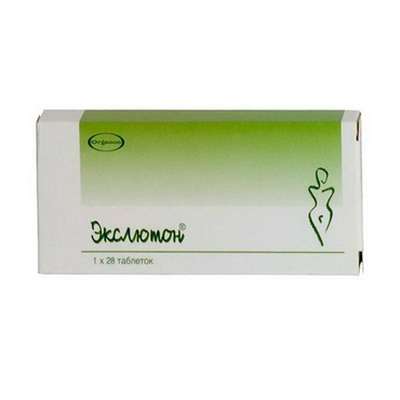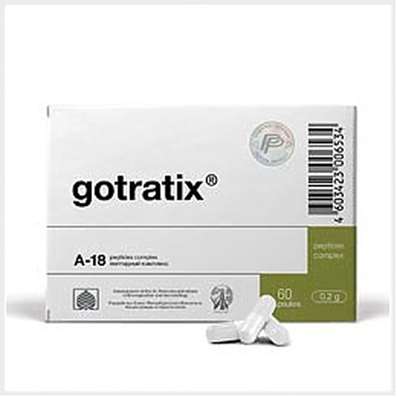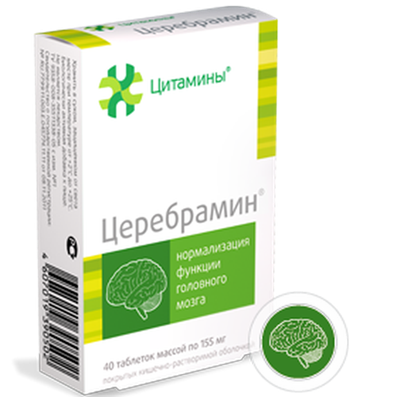Instruction for use: Forane
I want this, give me price
Dosage form: a liquid for inhalations a bottle (flakonchik) of a dark glass 250 ml
Active substance: Isoflurane
ATX
N01AB06 Isoflurane
Pharmacological group:
Anesthetic means
The nosological classification (ICD-10)
Z100.0 * Anesthesiology and premedication: Abdominal surgery; Adenomectomy; Amputation; Angioplasty of the coronary arteries; Carotid artery angioplasty; Antiseptic treatment of skin in wounds; Antiseptic treatment of hands; Appendectomy; Atheroctomy; Balloon coronary angioplasty; Vaginal hysterectomy; Venous bypass; Interventions on the vagina and cervix; Interventions on the bladder; Interference in the oral cavity; Reconstructive-reconstructive operations; Hand hygiene of medical personnel; Gynecological Surgery; Gynecological interventions; Gynecological operations; Hypovolemic shock during surgery; Disinfection of purulent wounds; Disinfection of the edges of wounds; Diagnostic Interventions; Diagnostic procedures; Diathermocoagulation of the cervix; Long-term surgeries; Replacement of fistulous catheters; Infection in orthopedic surgical interventions; Artificial heart valve; Kistectomy; Short-term outpatient surgery; Short-term operations; Short-term surgical procedures; Cryotyreotomy; Blood loss during surgical interventions; Bleeding during surgery and in the postoperative period; Laser coagulation Laserocoagulation; Laser retinopathy of the retina; Laparoscopy; Laparoscopy in gynecology; Likvornaya fistula; Small gynecological operations; Small surgical interventions; Mastectomy and subsequent plastic surgery; Mediastinotomy; Microsurgical operations on the ear; Mukinging operations; Suturing; Minor surgery; Neurosurgical operation; Eclipse of the eyeball in ophthalmic surgery; Orchiectomy; Pancreatectomy; Pericardectomy; The rehabilitation period after surgical operations; Reconvalence after surgical intervention; Percutaneous transluminal coronary angioplasty; Pleural Thoracocentesis; Pneumonia postoperative and post traumatic; Preparing for surgical procedures; Preparing for a surgical operation; Preparation of the surgeon's arms before surgery; Preparation of the colon for surgical interventions; Postoperative aspiration pneumonia in neurosurgical and thoracic operations; Postoperative nausea; Postoperative hemorrhage; Postoperative granuloma; Postoperative shock; Early postoperative period; Myocardial revascularization; Resection of the apex of the tooth root; Resection of the stomach; Bowel resection; Resection of the uterus; Liver resection; Small bowel resection; Resection of a part of the stomach; Reocclusion of the operated vessel; Gluing of tissues during surgical interventions; Suture removal; Condition after eye surgery; Condition after surgery in the nasal cavity; Condition after gastrectomy; Condition after resection of the small intestine; Condition after tonsillectomy; Condition after removal of duodenum; Condition after phlebectomy; Vascular Surgery; Splenectomy; Sterilization of surgical instrument; Sterilization of surgical instruments; Sternotomy; Dental surgery; Dental intervention on periodontal tissues; Strumectomy; Tonsillectomy; Thoracic surgery; Total gastrectomy; Transdermal intravascular coronary angioplasty; Transurethral resection; Turbinectomy; Removal of a tooth; Cataract removal; Removing Cysts; Removal of tonsils; Removal of myoma; Removal of mobile milk teeth; Removal of polyps; Removal of a broken tooth; Removal of the uterus; Removal of seams; Urethrotomy; Fistula of the luminal ducts; Frontoetmoidogamotomy; Surgical infection; Surgical treatment of chronic ulcers of extremities; Surgery; Surgery in the anus; Surgery on the large intestine; Surgical practice; Surgical procedure; Surgical interventions; Surgical interventions on the digestive tract; Surgical interventions on the urinary tract; Surgical interventions on the urinary system; Surgical interventions on the genitourinary system; Surgical intervention on the heart; Surgical procedures; Surgical operations; Surgical operations on veins; Surgical intervention; Vascular Surgery; Surgical treatment of thromboses; Cholecystectomy; Partial resection of the stomach; Extraperitoneal hysterectomy; Percutaneous transluminal coronary angioplasty; Percutaneous transluminal angioplasty; Coronary artery bypass grafting; Extirpation of the tooth; Extirpation of infant teeth; Extirpation of pulp; Extracorporeal circulation; Extraction of the tooth; Extraction of teeth; Extraction of cataracts; Electrocoagulation; Endourological interventions; Episiotomy; Ethmoidotomy; Complications after tooth extraction
Composition and release form
Concentrate (isoflurane - 99.9%) for the inhalation solution; in bottles of 100 ml, in the box 1 bottle.
Characteristic
Stable colorless liquid, without the addition of a chemical stabilizer. Has a slightly acrid, ethereal odor. With gas chromatographic monitoring, no changes were recorded in the composition of samples subjected to 5-year exposure to reflected sunlight in clear, colorless bottles, or samples exposed to UV irradiation for 30 hours.
The absence of signs of alkali absorption under the influence of 1N sodium methoxide in methanol solution on Forane for more than 6 months demonstrated high stability to the action of strong bases. Forane does not decompose in the presence of sodium lime and is not aggressive towards aluminum, tin, brass, copper and iron.
Some physical constants of florane: molecular weight - 184.5; boiling point at 760 mm Hg - 48.5 ° C; the refractive index n 20 D - 1,2990-1,3005; Specific gravity at 25 ° C is 1.496; steam pressure in mm Hg: at 20 ° C - 238, 25 ° C - 295, 30 ° C - 367, 35 ° C - 450.
The purity of the determination by gas chromatography is higher than 99.9%.
Inflammability in oxygen or in nitrous oxide:
9 J / s and 23 ° C - not flammable;
900 J / s and 23 ° C - it does not ignite in anesthetic concentrations.
MAK (minimum alveolar concentration), depending on age:
- 26 years ± 4 years - 1.28% (100% oxygen) and 0.56% (70% N2O);
- 44 years ± 7 years - 1.15 and 0.56 respectively;
- 64 years ± 5 years - 1.05 and 0.37 respectively.
Pharmachologic effect
Pharmacological action - anesthesia inhalation.
Pharmacokinetics
Only a small amount of isoflurane is metabolized. In the postoperative period, only 0.17% of isoflurane is found in the urine as metabolites. Cmax of inorganic fluoride in blood serum is on average significantly less than 5 mmol / L and is determined within 4 hours after anesthesia, returning to normal within the next 24 hours. No case of kidney damage was reported with isoflurane.
Clinical Pharmacology
Fast induction and especially awakening. Although, a minor irritant effect can limit the rate of induction. There is excessive salivation and tracheobronchial secretion. Rapidly inhibited pharyngeal and laryngeal reflexes. The use of isoflurane allows you to quickly change the level of anesthesia. The heart rhythm remains stable. Since spontaneous breathing is depressed with increasing depth of anesthesia, careful monitoring is necessary.
At the time of induction, blood pressure decreases, which returns to normal after the beginning of the operation.
AD tends to decrease and during maintenance of anesthesia, directly depends on its depth, however the heart rate remains stable. During ventilation with normal PaCO2, the minute volume of the heart remains constant regardless of the depth of the anesthesia and is maintained mainly by increasing the heart rate. With spontaneous ventilation leading to hypercapnia, which in turn can increase heart rate, the minute heart volume may exceed the baseline level.
The cerebral blood flow does not change with superficial anesthesia, but increases with deep. An increase in the pressure of the cerebrospinal fluid can be prevented or reduced by hyperventilation before or during anesthesia.
Changes in the EEG and convulsive activity are extremely rare with isoflurane.
Isoflurane significantly lessens the myocardium to the effects of adrenaline than enflurane. Limited data show that with isoflurane anesthesia in humans, sc administration of 1: 200,000 adrenaline solution in a volume of up to 50 ml does not lead to the development of ventricular arrhythmias.
Muscle relaxation at a normal level of anesthesia may be adequate for some surgical procedures, but to increase relaxation, significantly lower doses of neuromuscular relaxants are required.
Isoflurane can be used to induce and maintain anesthesia.
Indications for the drug Forane
Inhalation anesthesia.
Contraindications
Hypersensitivity, malignant hyperthermia in the anamnesis.
Since using isoflurane, the level of anesthesia can change quickly and easily, it is recommended that only carefully calibrated evaporators be used and that monitoring be performed to assess the inhaled and exhaled concentration. The degree of hypotension and respiratory depression can be some indication of the depth of anesthesia.
The clinical experience of using isoflurane, even with prolonged exposure, does not provide information on hepatotoxicity. However, the lack of a large experience of repeated application of isoflurane does not allow determining the effects of such an effect on liver function.
Like other halogen-containing drugs, isoflurane is used with caution in patients with increased intracranial pressure. In these cases, hyperventilation may be necessary. Isoflurane significantly potentiates the action of nondepolarizing muscle relaxants.
Application in pregnancy and lactation
Safety for pregnant women is not established. The blood loss associated with abortion using isoflurane is comparable to blood loss when using other inhaled anesthetics. So far, there is no adequate data for determining the place of isoflurane in anesthesia in obstetrics, except for caesarean section.
Side effects
Sometimes it is reported about arrhythmias. An increase in the number of white blood cells was noted even in the absence of surgical stress. In connection with the biodegradation of the agent in the blood serum, an insignificant increase in the level of inorganic fluoride is observed during and after anesthesia with isoflurane. It is unlikely that the observed low levels in the serum of inorganic fluoride (an average of 4.4 mmol / l) could cause toxic damage to the kidneys. they are significantly lower than the proposed threshold levels of nephrotoxicity.
As with other halogen-containing anesthetics, hypotension and depression are observed. It is recommended to continuously monitor blood pressure and respiratory parameters.
Supportive measures may be necessary to correct hypotension and respiratory depression due to a deepening level of anesthesia. Undesirable effects in the period of awakening (trembling, nausea and vomiting) are very rare and are comparable with the frequency of their occurrence when using other anesthetics.
Interaction
Isoflurane potentiates the action of all commonly used relaxants, however, the effect is more pronounced when using non-depolarizing muscle relaxants.
Neostigmine removes the effect of muscle relaxants, but does not affect the relaxation caused by isoflurane itself. All muscle relaxants are compatible with isoflurane.
Dosing and Administration
Inhalation, specially calibrated evaporators should be used to accurately control the supplied isoflurane concentration.
The minimum alveolar concentration (MAC) varies with age, the mean MAC (with pure oxygen) is: 0-1 months - 1.6%, 1-6 months - 1.87%, 6-12 months - 1.8%, 1 -5 years - 1.6%, 20 years - 1.28%, 40 years - 1.15%, 60 years - 1.05%.
Premedication. Selection of drugs for premedication should be carried out individually, taking into account that isoflurane is a respiratory depressant. Anticholinergic agents are the drugs of choice, but may be desirable in inhalational induction in children.
Induction. For introductory anesthesia, short-acting barbiturates or other intravenous drugs are commonly used, alternatively, isoflurane or oxygen with a nitrous mixture can be used.
In inhalational induction with isoflurane, it is recommended to first use it at a concentration of 0.5%. Concentrations from 1.5 to 3% usually cause a surgical level of anesthesia after 7-10 minutes.
Maintaining anesthesia. The surgical level of anesthesia can be maintained by 1-2.5% isoflurane in the oxygen-base mixture. When using isoflurane in pure oxygen, its concentration should be increased by 0.5-1%. To ensure anesthesia for caesarean section, 0.5-0.75% isoflurane in the oxygen-base mixture is sufficient.
During the maintenance of anesthesia, in the absence of other influencing factors, the blood pressure tends to decrease with increasing MAC; excessive decrease in blood pressure can be associated with a deepening of anesthesia, which can be corrected by a decrease in the concentration of inhaled isoflurane.
Elderly, to maintain the surgical level of anesthesia as for other drugs, lower concentrations are required.
Conditions for storing Forane
At temperatures below 30 ° C. Away from heat, in a tightly closed bottle
Keep out of the reach of children.
Shelf life of Forane
5 years.
Do not use after the expiry date printed on the package.

 Cart
Cart





